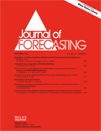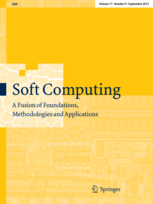This is an old revision of the document!
Last papers of the Group
 Forecasting Call Centre Arrivals Journal of Forecasting. Volume 32, Issue 7, pages 628–638, November (2013)
Forecasting Call Centre Arrivals Journal of Forecasting. Volume 32, Issue 7, pages 628–638, November (2013)
This article presents a novel neural network‒based approach to the intra‒day forecasting of call arrivals in call centres. We apply the method to individual time series of arrivals for different customer call groups. To train the model, we use historical call data from three months and, for each day, we aggregate the call volume in 288 intervals of 5 minutes. With these data, our method can be used for predicting the call volume in the next 5‒minute interval using either previous real data or previous predictions to iteratively produce multi‒step‒ahead forecasts. We compare our approach with other conventional forecasting techniques. Experimental results provide factual evidence in favour of our approach.
 Matching island topologies to problem structure in parallel evolutionary algorithms. Soft Comput. 17(7): 1209-1225 (2013)
Matching island topologies to problem structure in parallel evolutionary algorithms. Soft Comput. 17(7): 1209-1225 (2013)
In the context of Parallel Evolutionary Algorithms, it has been shown that different population structures induce different search performances. Nevertheless, no work has shown a clear cut evidence that there is a correlation between the solver’s population structure and the problem’s network structure. In this work, we verify this correlation performing a clear and systematic analysis of a large set of population structures (based on the well known β-graphs and NK-landscape problems. Furthermore, we go beyond our findings in these idealised experiments by analysing the performance of variable-topology EAs on a dynamic real-world problem, the Multi-Skills Call Centre.
 Migration and Replacement Policies for Preserving Diversity in Dynamic Environments. EvoApplications 2012: 456-465
Migration and Replacement Policies for Preserving Diversity in Dynamic Environments. EvoApplications 2012: 456-465
This paper seeks to resolve the difficulties arising from the configuration and fine-tuning of a Parallel Genetic Algorithm (PGA) based on the Island Model, when the application domain is highly dynamic. This way, the reader will find a number of useful guidelines for setting up a PGA in a real, representative dynamic environment. To achieve this purpose, we examine different (existing and new) migration and replacement policies for three different topologies. Of course, there are many other factors that affect the performance of a PGA such as the topology, migrant selection, migration frequency, amount of migrants, replacement policy, number of processing nodes, synchronism type, configuration in the isolated islands, diversity of policies in different islands, etc which are also considered as a part of this study. The pivotal point of all the experiments conducted is the preservation of diversity by means of an appropriate balance between exploration and exploitation in the PGA’s search process when the application domain is highly dynamic and strong time constraints arise. The experimental phase is performed over two problem instances from a real-world dynamic environment which is the multi-skill call centre.
 A Memetic Algorithm for Workforce Distribution in Dynamic Multi-Skill Call Centres. EvoCOP 2010: 178-189
A Memetic Algorithm for Workforce Distribution in Dynamic Multi-Skill Call Centres. EvoCOP 2010: 178-189
In this paper, we describe a novel approach for workforce distribution in dynamic multi-skill call centres. Dynamic multi-skill call centres require quick adaptations to a changing environment that only fast greedy heuristics can handle. The use of memetic algorithms, which are more complex than ad-hoc heuristics, can guide us to more accurate solutions. In order to apply memetic algorithms to such a dynamic environment, we propose a reformulation of the traditional problem, which combines predictions of future situations with a precise search mechanism, by enlarging the time-frame considered. Concretely, we propose a neural network for predicting call arrivals and the number of available agents, and a memetic algorithm to carry out the assignment of incoming calls to agents, which outperforms classical approaches to this dynamic environment. We also test our method on a real-world environment within a large multinational telephone operator.
 Forecasting in a Multi-skill Call Centre. ICAISC (2) 2010: 582-589
Forecasting in a Multi-skill Call Centre. ICAISC (2) 2010: 582-589
Call centre technology is subject to multiple improvements and innovations. Some of them try to improve agent performance and client satisfaction. There are two different but intrinsically linked problems. The first one is related to predictions of call arrivals, call abandonment, available agents having a certain skill, call pick-up and average delay time; and the second one deals with workload distribution within a multi-skill Call Centre. In this paper, we focus on forecasting call arrivals, which can be approached from several angles. Specifically, we analyse and compare Neural Networks, Time Series and Regression Models in this study.
David Millán-Ruiz, José Ignacio Hidalgo, Josefa Díaz: Comparison of Metaheuristics for Workforce Distribution in Multi-skill Call Centres. IJCCI (ICEC) 2010: 352-35
